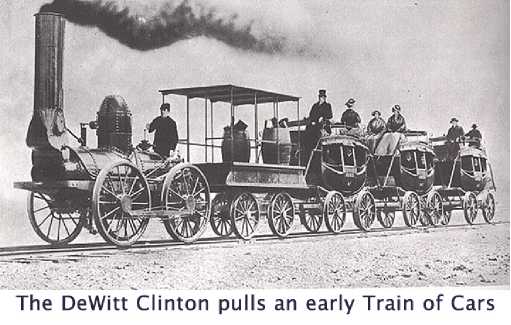It was inevitable that the steam engine, which transformed ocean transport, would also create a revolution in land travel. The first locomotives were built in England between 1815 and 1830, and soon several short railroads were operating in Great Britain. In 1827 the Baltimore & Ohio railroad was chartered, and the first train was powered by Peter Cooper's Tom Thumb, the first American-built steam locomotive to be operated on a common-carrier railroad. In 1830 the Baltimore and Ohio reached 13 miles west of the city and eventually connected Baltimore with Wheeling, Virginia.
By the 1840s United States had 3,500 miles of railroads, and by 1860 the figure had risen to 30,600 miles, most of which were built in the 1850s. Prior to the Civil War there was no real national network, but in the East several major rail lines existed, including the New York Central, the Pennsylvania, and the Baltimore and Ohio. The building of railroads stimulated other inventions, such as higher-quality iron and steel, which were needed for efficient operation. The first railroad brakes were operated by hand, and wood burning engines were hazardous both to passengers and the countryside through which the railroads passed. The engineering challenges were formidable, as it was necessary to create locomotives that would operate on curved tracks. Early rail travel was dangerous and uncomfortable; in addition to starting fires along the sides of the rights of way, the clothing of passengers occasionally caught fire from sparks as well. Brakes were weak and frequently failed on downgrades. Part of American lore includes many songs and stories about famous railroad crashes.
Railroads probably had the largest impact on the American economy of any development in the entire 19th-century. Railroads changed everything, even America's concept of time; in

Fact, the four time zones were invented by the railroads. In order for trains to leave and depart on time the telegraph was necessary, for many of the longer lines were single track, and the arrival of trains at turnouts, or passing sections (lengths of double track laid side by side between stations), had to be coordinated. Accurate time keeping was important for the successful operation of the railroad. Railroads created a demand for more efficient manufacturing techniques and communications, and the eventual handling of tickets, cargo manifests and so on created the first white-collar class in America. Railroads cut travel times between distant cities from weeks or months to days or hours.




 World History
World History









